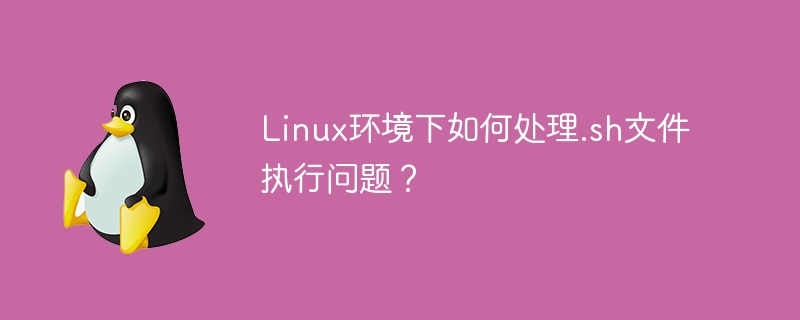

In the Linux environment, we often encounter situations where we need to execute .sh files. The .sh file is a script file in the Linux system, usually with .sh as the suffix, used to execute a series of commands. But sometimes we may encounter the problem that the .sh file cannot be executed. This may be due to permission issues or encoding format and other reasons. This article will introduce how to deal with .sh file execution issues in a Linux environment and provide specific code examples.
In the Linux system, if a .sh file does not have execution permission, it cannot be executed by simply double-clicking or directly entering the file name. In order to solve this problem, you can use thechmodcommand to add execution permissions to the .sh file.
chmod +x script.sh
In the above command,script.shis the file name of the .sh file you want to execute. After execution, execution permission will be added to the file. After adding permissions, you can use the following command to execute the .sh file:
./script.sh
Sometimes, the .sh file we wrote in the Windows environment will be used in Linux It cannot be executed normally on the system. This may be caused by different line breaks or encoding formats in different operating systems. To solve this problem, you can use thedos2unixcommand to convert the file format.
First install the dos2unix tool:
sudo apt-get install dos2unix
Then use the dos2unix command to convert the format of the .sh file:
dos2unix script.sh
If. If the script syntax in the sh file is incorrect, it will also cause the file to fail to execute. In order to check whether there are syntax errors in the .sh file, you can use thebashcommand to run the script and view the output information.
bash -n script.sh
If there is a syntax error in the script, an error message will be output in the terminal. You can modify the script file based on the error message.
When we execute the .sh file, we need to ensure that the current working directory is consistent with the path where the .sh file is located, or use an absolute path to execute the script. Otherwise, the system will not be able to find the file and execute it.
Through the above methods, we can deal with the problem of executing .sh files in the Linux environment. By adding execution permissions, converting file formats, checking for syntax errors, and ensuring that the file path is correct, you can ensure that the .sh file can be executed smoothly. I hope the methods provided in this article are helpful to you!
The above is the detailed content of How to deal with .sh file execution problems in Linux environment?. For more information, please follow other related articles on the PHP Chinese website!




